History and Geography
Montessori Elementary History and Geography Curriculum
“What is necessary is that the individual from the earliest
years should be placed in relation with humanity. There is no love in our hearts for the
human beings from whom we have received, and are receiving so much in bread and clothing,
and numerous inventions for our benefit. We take and enjoy all that is done for us without
gratitude... Perhaps we teach the child to thank God and pray to Him, but not to thank humanity,
God’s prime agent in creation; we give no thought to the men and women who daily give their
lives that we may live more richly... We write and read, and the child can be taught who
invented writing and the instruments wherewith we write, how printing came and books became
so numerous. Every achievement has come by the sacrifice of someone now dead. Every map speaks
eloquently of the work of explorers and pioneers, who underwent hardships and trials
to find new places, rivers and lakes, and to make the world greater and richer for our dwelling.
Let us in education always call the attention of children to the hosts of men and women who are
hidden from the light of fame, so kindling a love of humanity; not the vague an anaemic sentiment
preached today as brotherhood, nor the political sentiment that the working classes should be
redeemed and uplifted. What is most wanted is no patronizing charity for humanity, but a reverent
consciousness of its dignity and worth.”
A Study of Evolutionary History
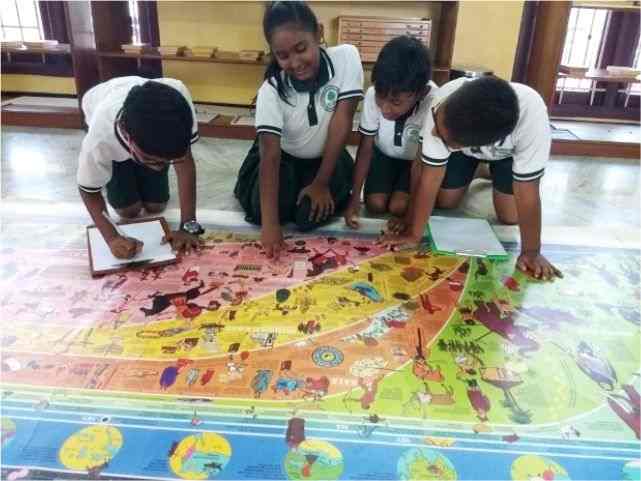
In Lower Elementary, children acquire a vast base of knowledge about the world,
from its geographic features to the way different cultures throughout the ages and throughout
the world have satisfied the basic needs (such as food, shelter, clothing, and transportation).
They learn to observe, categorize, and integrate their knowledge, guided by the Montessori Five
Great Lessons. These lessons, revisited at the start of each school year, progress from the
origins of the universe and life, chronologically to the development of writing and the
explosion of knowledge it made possible.
By Upper Elementary, children study history in its
logical sequence, progressing from prehistory through ancient history toward the present.
This sequence is taught as an exciting story, with a focus on the broad arc of history and
essential events, told to groups of children. Children then have the opportunity to
independently dive deeper into a culture, an event, or a historical figure as part of their
follow-on work. This approach ensures that all children understand how human society
developed over time, and the key events that shaped human history, while also engaging
their motivation by providing autonomy on researching and presenting specific details.
“The story of the past can be just a boring account of events. It must not be given this way. It must be given like a fairy tale.”
By Dr. Maria Montessori.Aim of History Lessons
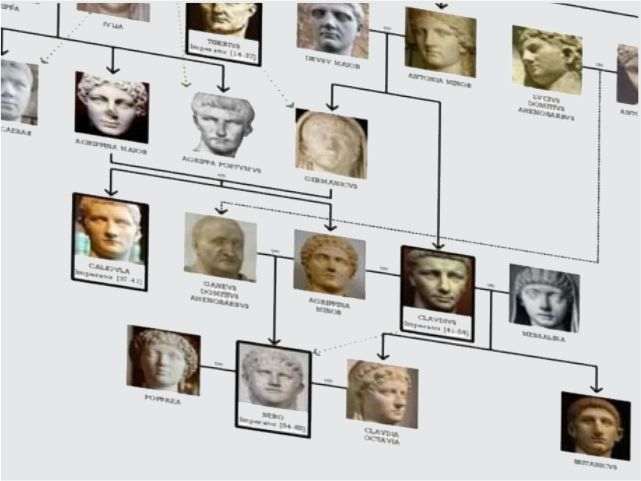
A key goal of the Vruksha – International School of Montessori history program is to help students understand cause and effect in history that people’s decisions and actions have long-reaching consequences. We ask the question, “Why do these historical events unfold the way they do?” For the student, this means not only getting the (essential!) facts, but seeking to uncover the why of these facts. We may know that an emperor in Roman times acted in a particular way; what we really want to understand is why he did what he did. In this way, the Upper Elementary students learn to draw larger conclusions about the successes and struggles of man based on solid, factual evidence.
“When we were camping recently, a friend who is a history teacher was with us. My daughter and her friend, who is also at Vruksha, started talking about Julius Caesar, and just kept going on and on. They knew so many details that this history teacher was astounded, and let the girls know that they knew things that he didn’t even know. The girls just said, “really?”—they didn’t realize how much they are learning at Vruksha. They have grown to love knowing the details, to talk about them. People outside of school are always surprised when my kids talk about history and science most adults don’t even know what my kids know. And, of course, having this experience of knowing more than adults only makes them more eager to learn!”
A Parent.Connecting History to a Student’s Life
Connecting history to a student’s unique life is at the core of our approach to history. We ask students to empathize with the motivations of people of the past. For example, if we are talking about the opportunity of being one of the first to come over to the New World in the early 17th century, a discussion question would be: “Would you go, and why?”
“History must be alive and dynamic, awakening enthusiasm, destructive of intellectual egoism and selfish sloth. For two thousand years we have been taught: ‘Thou shalt love thy neighbor as thyself’ and we are little nearer to the doing of it for mere preaching does nothing. … The history of human achievements is real, a living witness to the greatness of man, and the children can easily be brought to thrill to the knowledge that there are millions of people like themselves, striving mentally and physically to solve the problems of life, and that all contribute to a solution though one may find it.”
By Dr. Maria MontessoriWhat Your Child Will Study
An exploration of human needs and causality in human relationships
Fundamental skills needed to understand history.
Children learn basic skills systematically from working with timelines (where we integrate math, e.g., by bringing in two Golden Bead Thousand Chains to help children understand what 2,000 years means) to calendars, to map reading.
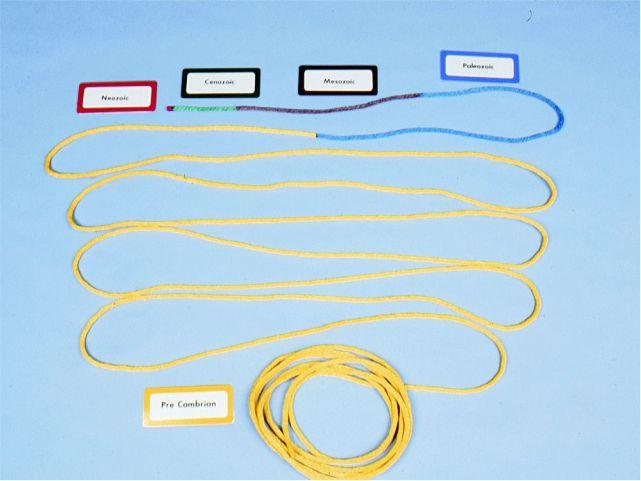
A systematic framework for thinking about cultures and places.
Lower elementary children learn to think about the Fundamental Needs of Men with Montessori materials that guide them as they learn about how people from prehistory to modern times, from Europe to Africa and Asia have met their needs for food, shelter, clothing, transportation, spirituality, and art. They come to understand that all humans have common needs, needs that are similar to their own and that what differentiates people across places and across time is how they satisfy those universal needs.
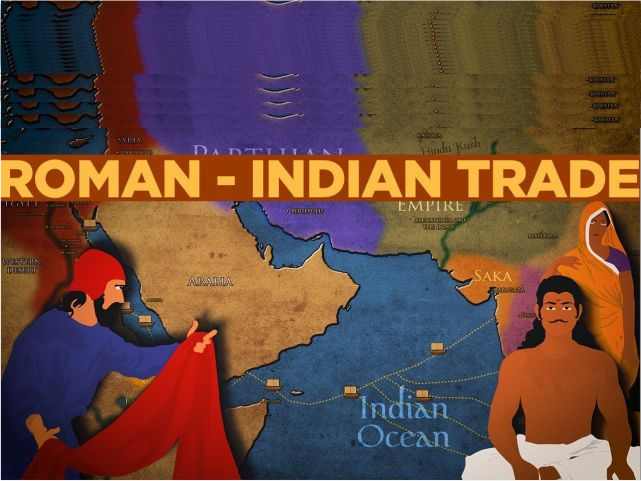
A broad base of knowledge about different cultures and places.
As students explore a wide variety of cultures, they come to appreciate and notice their differences. We offer this content in a stimulating variety of ways from telling stories, to reading books about different cultures in read-aloud (integrating history and literature), from studying Montessori Three-Part-Cards illustrating how people at different times have solved the problems of shelter or transportation, to encouraging and supporting independent research into cultures across the globe and across time, to inviting families to come into class and share their cultural traditions (e.g., by sharing seasonal celebration, bringing in cultural objects, or coming to school in cultural dress).
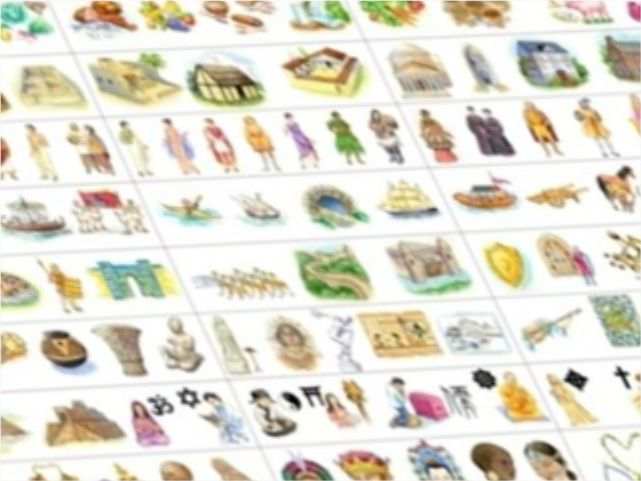
A solid grasp of physical and political geography.
The Montessori Elementary geography programs builds upon the foundation laid in Montessori Primary. Students work with pin maps, identifying capitals and flags of countries across the world. They move from a concrete study of land and water forms in Primary with clay and water, to learning to identify key rivers, lakes, mountain ranges, and other defining physical features in the United States and across the world. They learn to read actual maps, to use a compass, and to find places using compass directions and latitude/longitude grids. They integrate their study of geography with their growing knowledge of the Fundamental Needs of Man, discovering how physical geography and climate impact housing, clothing, agriculture, etc.
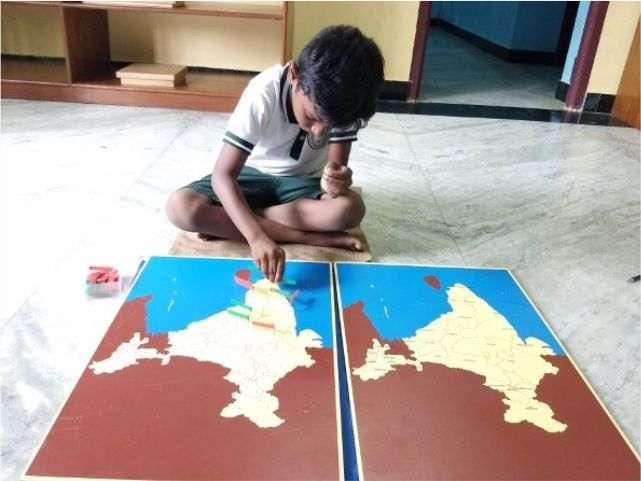
A chronological study of history, from prehistory to modern times.
Guided by the Montessori Five Great Lessons, children embark on studying history from prehistory to modern times. This study takes several years, and prepares children to capably reason about human events not just in high school, but throughout their lives.
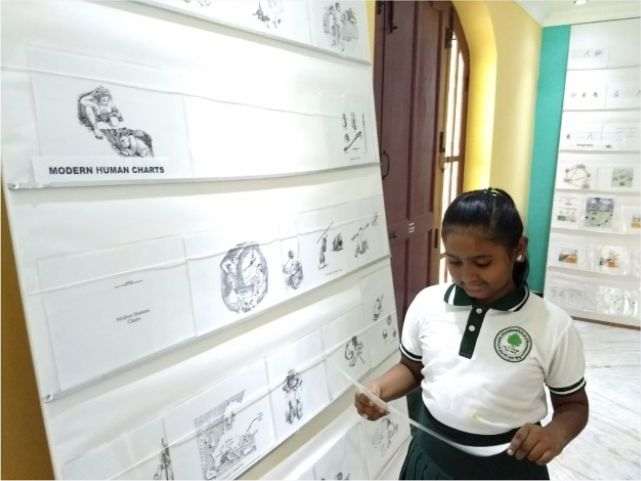
“Vruksha teaches history chronologically and thus makes it comprehensible to students. It’s such a contrast to the public schools, where they teach things haphazardly, and where students just don’t get it. Recently, my son recalled experiencing Black History month in elementary school: he was talking with a friend who was in his class then, and they told me about a game they used to play: at recess, they would sell each other to other people. They had learned that money could be made at slavery, and had made a game out of it. That’s what you get when you teach history badly. At Vruksha, in contrast, they teach history chronologically [starting in Upper Elementary], from the beginning, and they integrate it with art history and literature. My younger son, who was at Vruksha, really gets history. He doesn’t just memorize the dates of the Renaissance, but he understands what it was, and what it meant. The strong knowledge of history carries over to other subjects. For example, it’s much easier to make sense of Geometry, when you have studied ancient history.”
A ParentGet in Touch with Us
Our Headquarters are in Chennai and Puducherry
27-28, 2nd Cross
Moogambigai Nagar
Reddiarpalayam, Pondy - 605 010
Phone: +91 9994851951
Phone: +91 9361919996
Email: contact@vrukshamontessori.com
24-25, 12th Cross
Ranga Reddy Gardens
Neelankarai, Chennai - 600 041
Phone: +91 9994851951
Phone: +91 9361919996
Email: contact@vrukshamontessori.com
